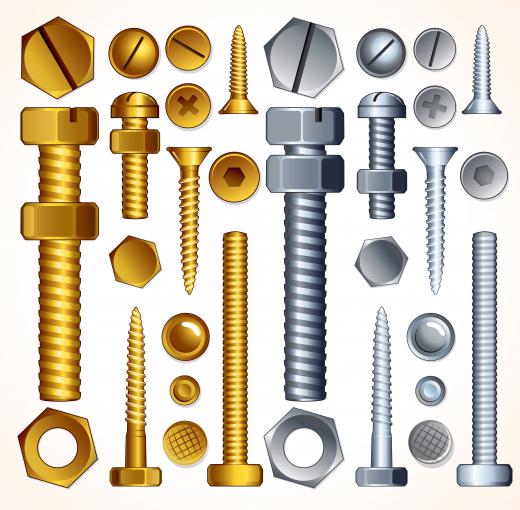A pin bolt is normally a rounded piece of metal that joins two separate, hinged objects together. It can also be constructed in a variety of different configurations in order to allow two otherwise immobile parts to rotate at a central pivot point or to be held stationary in place by a force evenly distributed across its surface. Its makeup usually consists of a head in which to strike the pin bolt in place and a sturdy shaft that securely adjoins the two other objects together, often by the use of force. The most common types of pin bolts can be implemented for thousands of separate uses, and they are normally an essential feature in even the most basic of mechanical devices.
Perhaps the most common example of a shear pin bolt would be a hinge assembly located on a standard door frame. The pin bolts are lubricated and placed between each of the hinges to allow for the door to open and close without causing friction, and because of their solid construction, they generally do not require any maintenance or adjustments as long as the accompanying components continue to operate smoothly. Another illustration of a pin bolt would be on the brake caliper that is fitted to an automobile; its presence ensures that the caliper will remain balanced. Equalized pressure can also be applied to both sides of the brake pads simultaneously. A cotter pin bolt is also commonly found on many mechanical devices, and it incorporates a long, thin piece of metal that is doubled over in a U shape to secure two pieces of metal together.

The pin bolt's original design in the 18th century was carved out of wood to reinforce the joists during the shipbuilding process. At the time, pin bolts joined clinch bolts, later called rivets, in the industry of shipbuilding. The screw bolt is now the most common type of bolt used in the area of shipmaking.
Since its invention, the pin bolt has been modified hundreds of times under various patents in multiple industries across the globe. Today, pin bolts can be found within the central mechanism of bicycles, locks and electronics. Furniture, firearms, appliances, vehicles, and other common household items may also include pin bolts.
